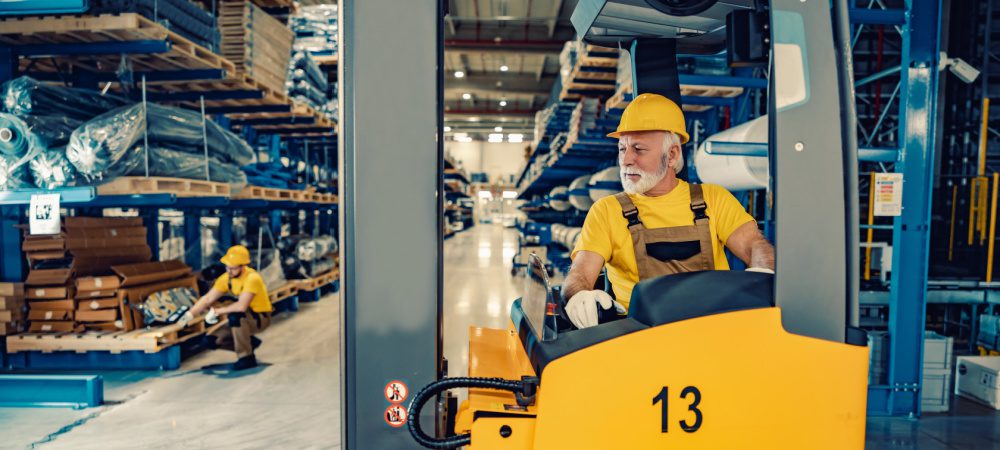
Aging Workers: Challenges and Recommendations
Sustainable Workforce in an Aging Society
The workforce is graying but far from fading. By 2030, we’re staring down a 96.5% growth rate in the labor force for people 75 or older, according to the U.S. Bureau of Labor Statistics. And let’s not overlook the 23% of today’s workers who are already over 55.
These figures set the stage for a pressing need to address safety and productivity in an aging labor market. So let’s delve into the unique challenges and actionable solutions demanded by this evolving demographic landscape.
Who are aging workers, and what challenges do they face?
When discussing an “aging workforce,” it’s essential to recognize the scope of this term. According to the National Center for Disease Control and Prevention (CDC), there’s no universally accepted age that defines an “aging worker,” but for the context of this conversation, we’ll use the age of 55 as a starting reference point for this age group:
So what challenges do these workers face? Rest assured, the picture extends beyond the cliché discussions of retirement planning and legacy projects.
- Workplace injuries: As we’ve established, safety is an imperative that takes on added significance as workers age. Particularly in sectors that demand physical labor, the likelihood of older workers experiencing slips, trips or falls increases, making preventative safety protocols not just beneficial but vital.
- Caring responsibilities: Imagine juggling work deadlines and caregiving tasks for elderly parents simultaneously. Many older employees are in this exact situation, and their need for flexibility resembles the situation facing those with childcare needs — except it’s a topic less frequently addressed in workplace policies.
- Adapting to new technologies: We all know technology isn’t static; it evolves, often rapidly. Older employees may find the pace of change challenging, not due to an inability to adapt, but because they might benefit from specialized, targeted training modules tailored to their experience and comfort level.
- Flexible work requirements: Flexibility is a bit of a necessity for many aging workers. Organizations must have streamlined processes in place to facilitate discussions about and execution of flexible working arrangements, from part-time schedules to remote work.
- Age discrimination: The impact of age-related stereotypes is twofold: These unfair assumptions undermine the potential of older workers and can lead to losses in workplace productivity and cohesion. Addressing this issue is critical for fostering an inclusive environment.
- Energy levels: Stamina and energy levels are variable factors influenced by age. For older employees, adaptations in their workload or schedule may be beneficial in preserving both productivity and health.
- Retirement age: The concept of mandatory retirement is outdated. Today, the emphasis is on planning for a diverse range of career paths, which may include late-stage career changes, consultancy roles or, of course, transitions into a phased retirement.
- Mental acuity: The value experienced workers bring to a role is unmeasurable. However, cognitive processing speeds can vary and may require a reevaluation of workflow structures or job roles to maintain optimal productivity.
- Absenteeism: Absenteeism due to health concerns is a topic that requires a nuanced approach. It behooves organizations to implement wellness programs specifically designed to meet the needs of aging employees: programs that are preventive rather than reactive.
How can we mitigate work hazards for the aging workforce?
Now, time for us to focus on the solutions instead of the challenges. Here are practical steps you can take to benefit not just older employees but the organization as a whole, enhancing productivity, reducing turnover and fostering a more inclusive work culture:
1. A holistic view of healthcare
Kick off a comprehensive health program that combines regular medical check-ups, nutritional guidance, and exercise routines. This could entail strength training exercises designed to boost bone density and muscle mass. Not only does this assist in the day-to-day physical demands of work but it also mitigates long-term health risks.
2. Tailored training modules
One size doesn’t fit all when it comes to training, especially for technology. Specialized training programs can equip older workers with the skills they need to adapt to rapidly evolving tech landscapes, turning a potential obstacle into an asset. Keep reading — we’ve got more on this later.
3. Smart workspace engineering
Take workspace customization to the next level. Beyond ergonomically designed furniture, consider innovations like adaptive lighting systems that adjust to individuals’ needs. Introduce signage with larger fonts and anti-glare screens to reduce eye strain. You might also want to employ an adaptable temperature control system, particularly with the summer heat and unique needs like menopause in mind. Cooling stations or even personal fans can be game changers for older workers who are more susceptible to heat-related issues.
4. Scaled flexibility in work arrangements
Develop a tiered approach to flexible work arrangements. From condensed workweeks to remote work opportunities, this structure allows older employees to manage energy levels and balance other life commitments like caregiving.
5. Employee autonomy
Allow aging workers greater control over how they manage their work, which can significantly improve job satisfaction and mental well-being — another win-win for both the individual and the organization.
6. Community building and mental health
Promote a positive attitude toward aging within the workplace. Counteract stereotypes and potential sources of anxiety or depression through open dialogues, mentorship programs, and perhaps surveys to understand any unique concerns this demographic might have.
Adapting training methods and leveraging the benefits of an older workforce
We promised more on this, so let’s dive deeper. Training doesn’t have to be a barrier — it can be a bridge to unlocking the capabilities of an aging workforce. But when it comes to older employees, it pays to think creatively about how training modules are structured and delivered. For example, if you’re introducing a new project management software tool, consider breaking down the training into manageable modules. These could be 15-minute chunks that cover specific features, making it less overwhelming for those who aren’t tech-savvy.
But don’t just stop at the ‘how-to’; delve into the ‘why’ with real-world applications. Say your business is moving toward cloud storage solutions. During the training, use practical lessons that simulate the process of transferring a project’s data to the cloud. This hands-on approach ensures that older workers can immediately apply what they’ve learned, seeing the value firsthand.
Moreover, mentorship has long been considered a one-way street, with seasoned pros advising younger workers. However, there’s room for symbiosis here. In a manufacturing setting, for instance, a veteran employee might know the ins and outs of machine maintenance like the back of their hand. Pairing them with a younger worker adept in digital troubleshooting could result in mutual growth; the older worker gains contemporary tech skills while the younger worker learns invaluable machine upkeep techniques.
And finally, let’s also talk about the broader culture of learning within an organization. In sectors like construction, where innovation and safety are always top of mind, the value of a seasoned worker’s experience is undeniable, but so is the importance of keeping up with industry advancements. Why not blend the two? Incentivize your veteran construction workers to engage with the latest training programs, covering their costs and maybe even offering a project-related bonus for applying new skills on-site. Not only does this facilitate ongoing education for older workers, but it can also inject new methodologies and insights into your operations, enriching the team’s collective knowledge.
Discover more resources from FFVA Mutual
For more information, watch this Keeping Aging Workforce Safe webcast hosted by Karen Johnson, our Safety Training & Resource Development Manager, for tips and resources to make your workplace safer for older workers.
We provide a variety of safety training programs and resources to help you prevent accidents and injuries. Ready to make your workplace safer and more inclusive for everyone? FFVA Mutual is your go-to resource hub.
Got a safety question to ask our Solutionists? Fire away. We’re all ears, all the time. Let’s get the ball rolling!
FROM OUR BLOG
SEE MORE POSTS
How to Develop a Written Safety Program

Heat Stress Prevention: Tips To Help Employees Stay Cool

